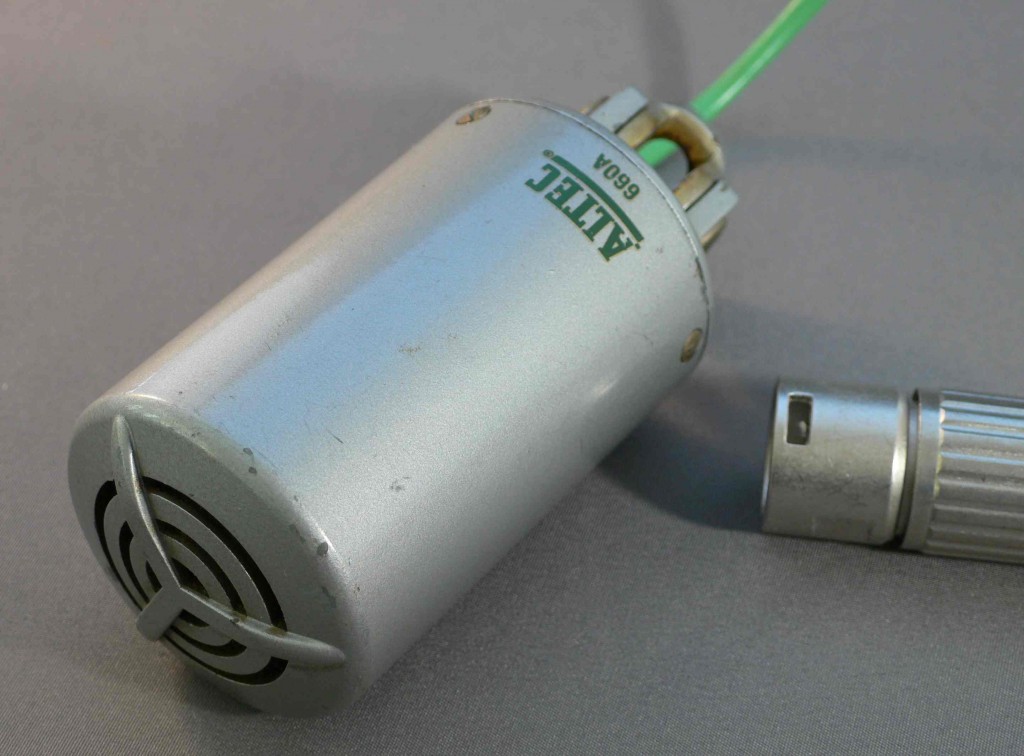 A quick review of some odd mics from the ‘pile’ that have not made it over to the studio yet. If anyone out there is using these for makin’ records, drop a line a let us know yr thoughts. Above is the Altec 660A, which is an Altec-branded iteration of an earlier western-electric mic. This thing sounds very thin. it’s quite small – check the XLR connector for size reference.
A quick review of some odd mics from the ‘pile’ that have not made it over to the studio yet. If anyone out there is using these for makin’ records, drop a line a let us know yr thoughts. Above is the Altec 660A, which is an Altec-branded iteration of an earlier western-electric mic. This thing sounds very thin. it’s quite small – check the XLR connector for size reference.
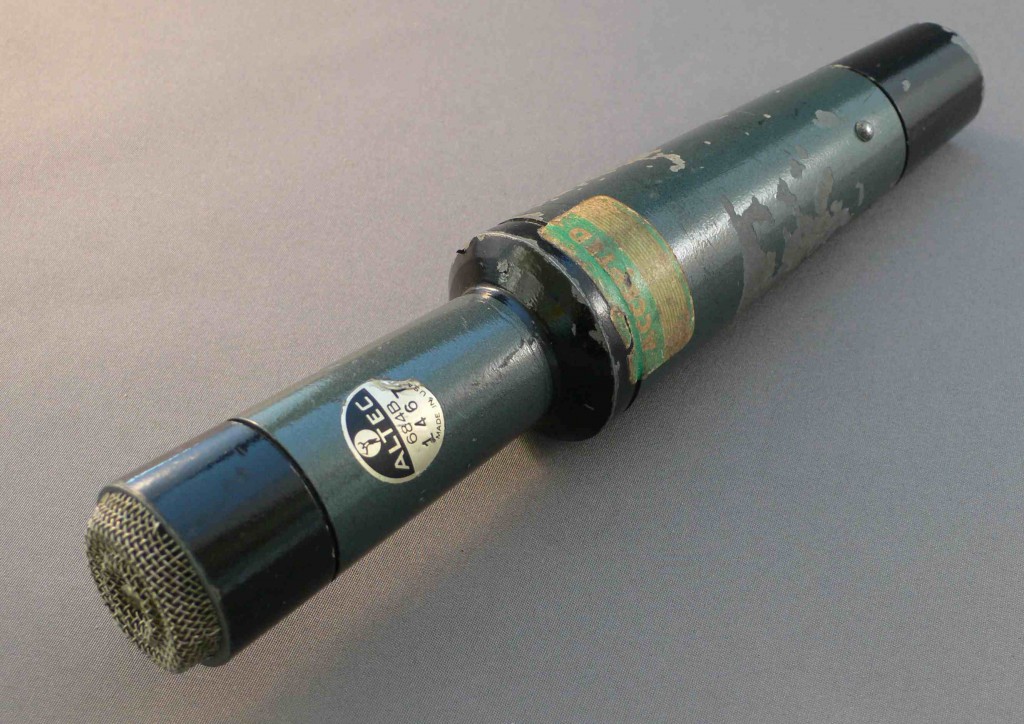 Another ancient Altec mic. this is a 684B. This piece does not sound bad, but… it failed the SM57 test. What, you ask, is the SM57 test? Well… whenever a new mic appears, i quickly A/B it with an SM57. If the SM57 sounds both ‘better’ (IE more ‘hi-fi’) AND ‘more interesting’ (this is harder to quantify….), then the new mic goes in a box somewhere. 684B up there failed the SM57 test.
Another ancient Altec mic. this is a 684B. This piece does not sound bad, but… it failed the SM57 test. What, you ask, is the SM57 test? Well… whenever a new mic appears, i quickly A/B it with an SM57. If the SM57 sounds both ‘better’ (IE more ‘hi-fi’) AND ‘more interesting’ (this is harder to quantify….), then the new mic goes in a box somewhere. 684B up there failed the SM57 test.
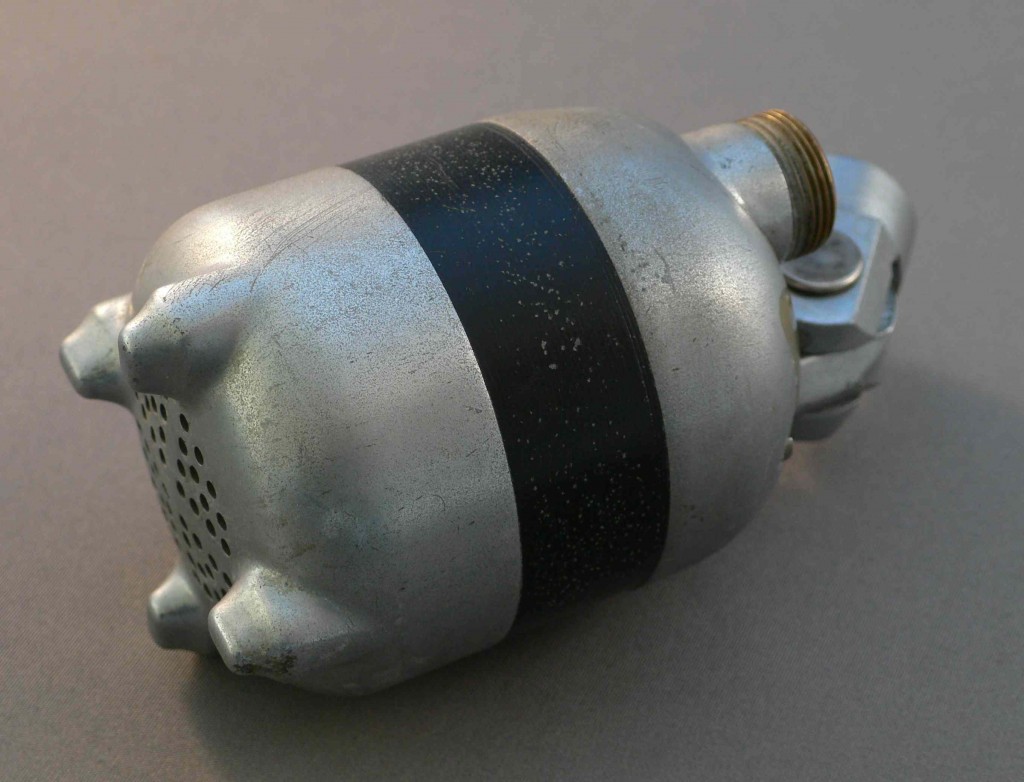 This is an American D4T. This is a hi-Z dynamic public-address mic from the 40s. This is, btw, the first antique mic i ever bought. picked this up at an antique shop in Prov RI back in the mid 90s, along with a little tube suitcase PA system and nice old cast-base mic stand… $75 i think…. This mic still works, and it sounds cool, but it’s just too distorted… feel like it sounds too ‘Pop,’ of all things, at this moment; ‘distressed-vocals’ being the trendy thing that they are.
This is an American D4T. This is a hi-Z dynamic public-address mic from the 40s. This is, btw, the first antique mic i ever bought. picked this up at an antique shop in Prov RI back in the mid 90s, along with a little tube suitcase PA system and nice old cast-base mic stand… $75 i think…. This mic still works, and it sounds cool, but it’s just too distorted… feel like it sounds too ‘Pop,’ of all things, at this moment; ‘distressed-vocals’ being the trendy thing that they are.
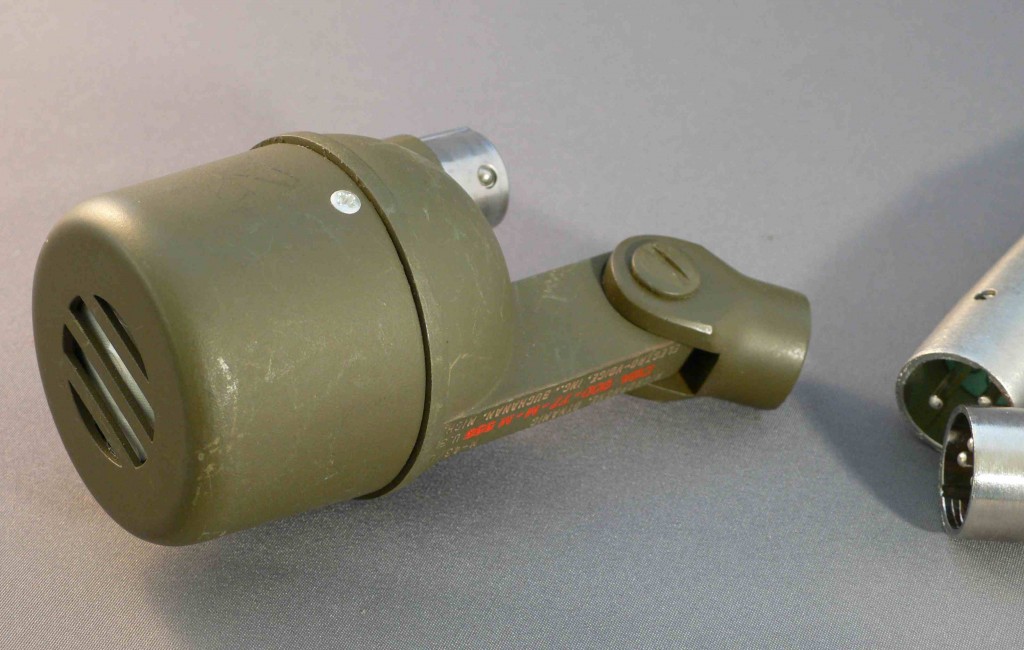 An Electro-voice military communications mic. Got this one still in its heremetically-sealed, foil-lined pouch. It ain’t bad, but… i have too many mics like this, only just slightly better….
An Electro-voice military communications mic. Got this one still in its heremetically-sealed, foil-lined pouch. It ain’t bad, but… i have too many mics like this, only just slightly better….
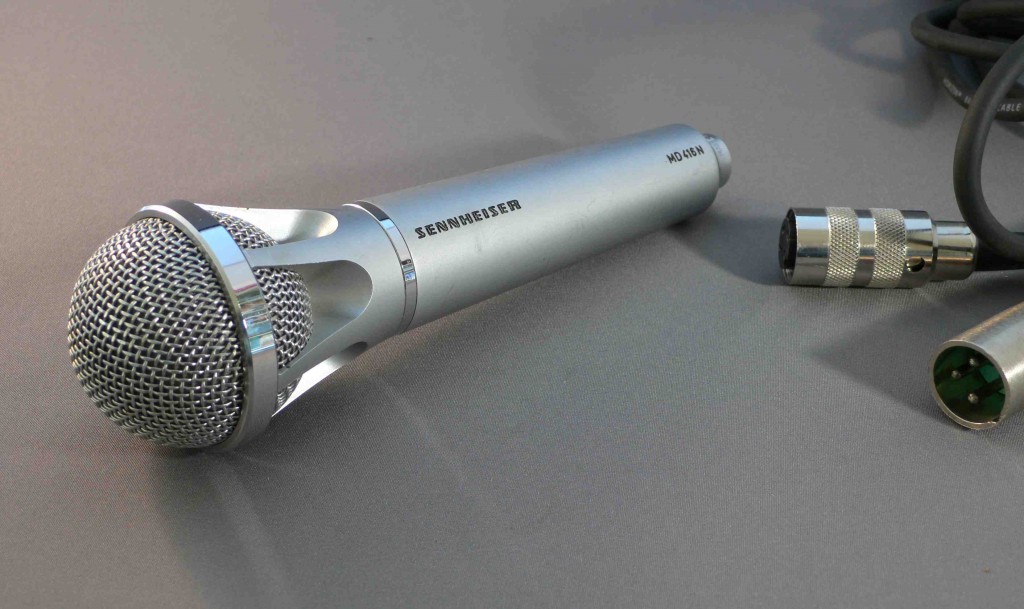 A Sennheiser MD 416. I was really excited about this thing, and i paid like $100 for it, which is a fortune for a cheapskate like me. Now, I have a lot of old sennhesiers… an original 409, 421, and several 441s… and i really dig them… but this thing just has no… balls? No low-end, at least. And that Mini-Tuchel-to-XLR cable wasn’t cheap either. This gets my vote for the most-expensive-mic-that-looks-like-a-really-cheap-mic. I will call it Paris H. from now on.
A Sennheiser MD 416. I was really excited about this thing, and i paid like $100 for it, which is a fortune for a cheapskate like me. Now, I have a lot of old sennhesiers… an original 409, 421, and several 441s… and i really dig them… but this thing just has no… balls? No low-end, at least. And that Mini-Tuchel-to-XLR cable wasn’t cheap either. This gets my vote for the most-expensive-mic-that-looks-like-a-really-cheap-mic. I will call it Paris H. from now on.
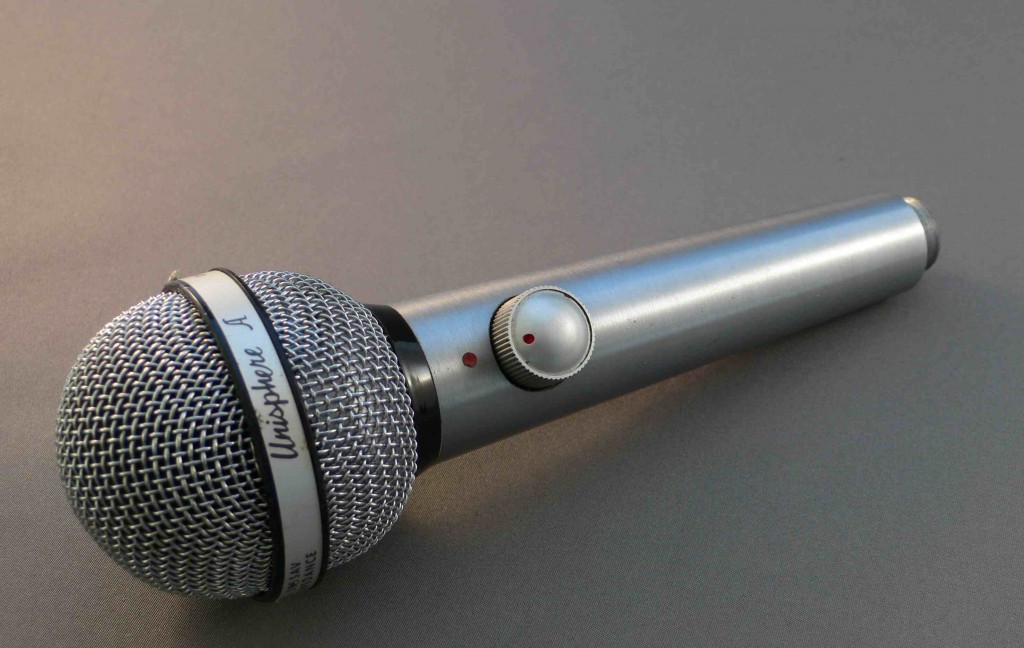 Shure 585 ‘unisphere A.’ Basically a cheap hi-z dynamic with a volume pot built in. I think this is known as the ‘James Cotton’ mic. Cotton was a harmonica player in the 60s whi apparently used just about every amp and mic in existence at one point or another, cos there is really no limit to the range of items people are eager to associate with him.
Shure 585 ‘unisphere A.’ Basically a cheap hi-z dynamic with a volume pot built in. I think this is known as the ‘James Cotton’ mic. Cotton was a harmonica player in the 60s whi apparently used just about every amp and mic in existence at one point or another, cos there is really no limit to the range of items people are eager to associate with him.
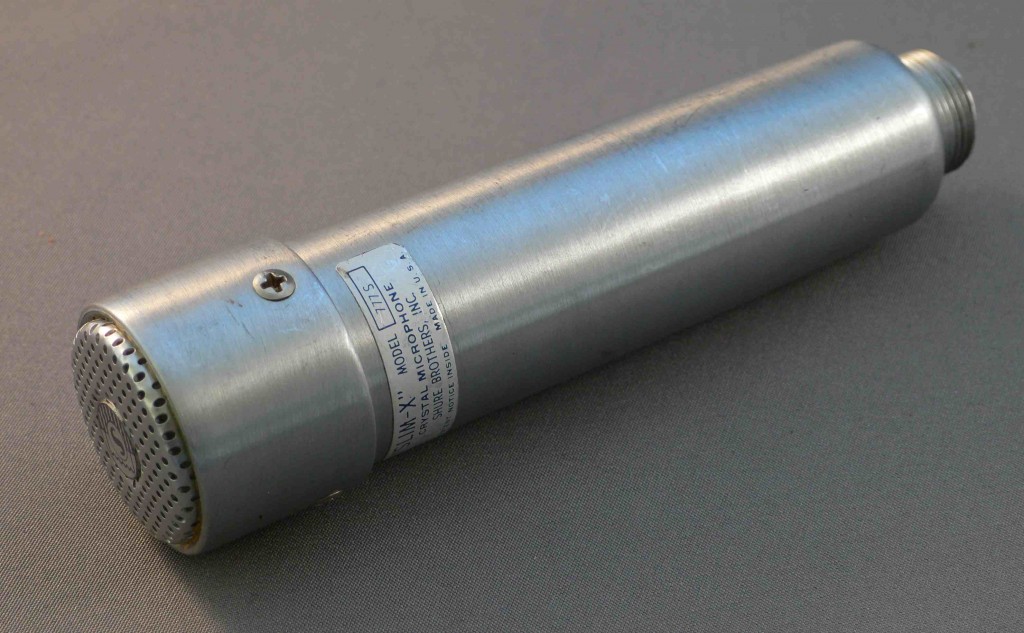 Shure 777s Crystal mic with switch. I think this came with a large pile of old mics. It’s a 60 year-old crystal mic. not much more to say.
Shure 777s Crystal mic with switch. I think this came with a large pile of old mics. It’s a 60 year-old crystal mic. not much more to say.
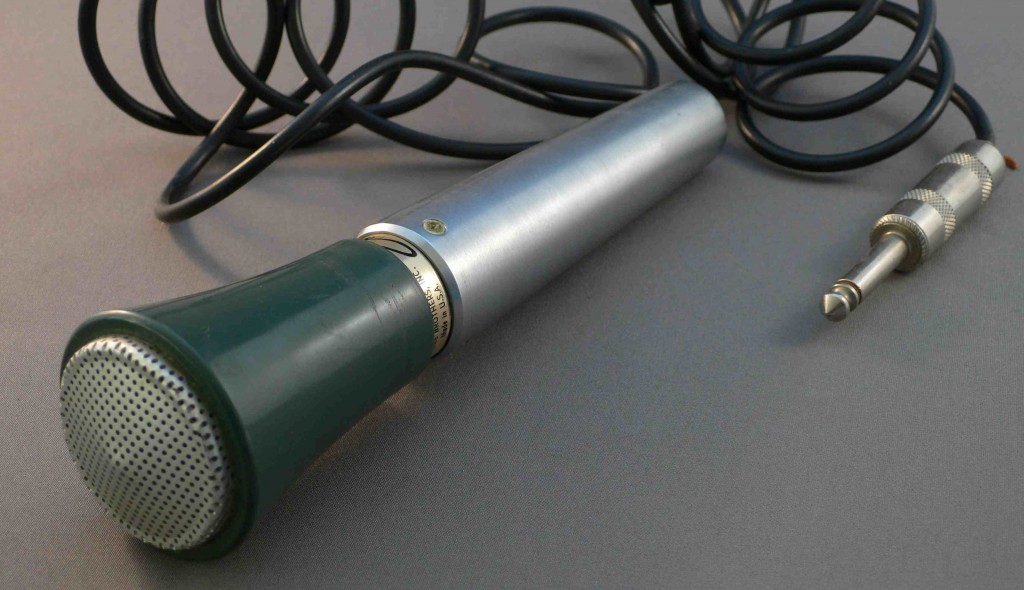 Shure Commando. Honestly not even sure what kind of mic this is. Sounds pretty cool but it’s hi-z so it’s a pain in the ass to use in the studio. harp (harmonica) dudes seem to dig these.
Shure Commando. Honestly not even sure what kind of mic this is. Sounds pretty cool but it’s hi-z so it’s a pain in the ass to use in the studio. harp (harmonica) dudes seem to dig these.
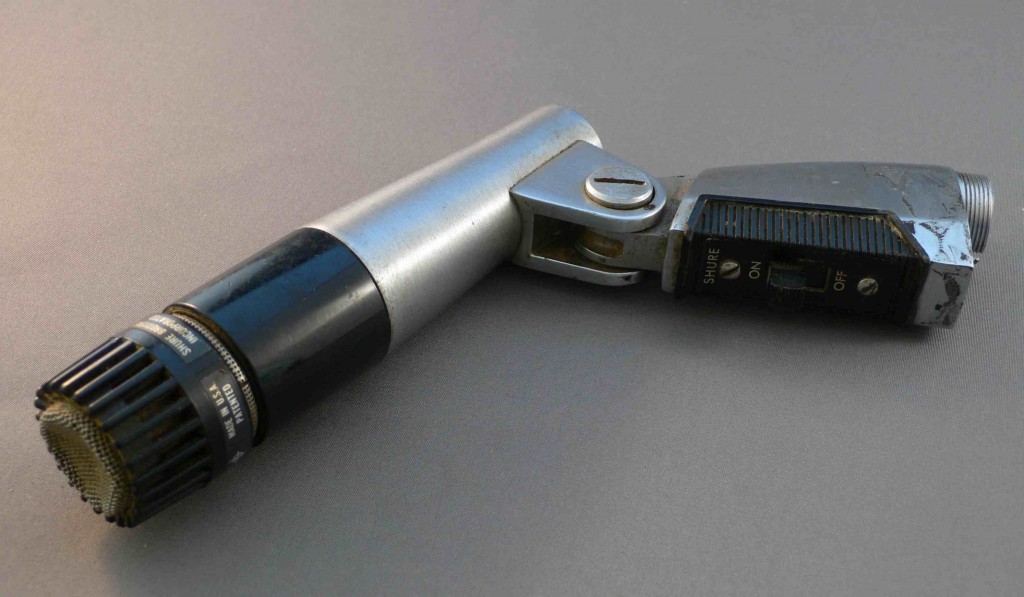 Shure PE-54. The ‘PE’ stands for ‘Professional Entertainer,’ believe-it-or-not (seriously, though, this is true.). This is the hi-z version of the Unidyne III… which is the forerunner of the SM57. This is actually a really good sounding mic, but since it’s hi-z, it’s a pain to use. I have an SM56, which is the balanced version of this thing, so this is kinda redundant. but for real this mic sounds great. i was surprised.
Shure PE-54. The ‘PE’ stands for ‘Professional Entertainer,’ believe-it-or-not (seriously, though, this is true.). This is the hi-z version of the Unidyne III… which is the forerunner of the SM57. This is actually a really good sounding mic, but since it’s hi-z, it’s a pain to use. I have an SM56, which is the balanced version of this thing, so this is kinda redundant. but for real this mic sounds great. i was surprised.
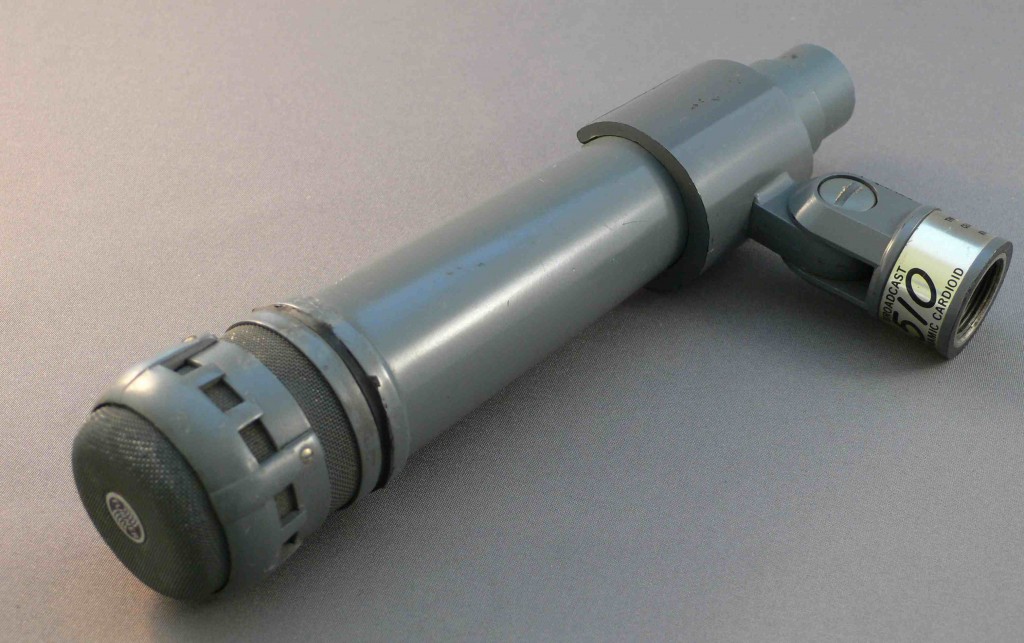 Turner 510. The best dynamic mic Turner ever made. I am actually not sure how this thing failed the SM57 test. Think maybe it deserves another chance. Look for a shoot-out including this mic. here. soon.
Turner 510. The best dynamic mic Turner ever made. I am actually not sure how this thing failed the SM57 test. Think maybe it deserves another chance. Look for a shoot-out including this mic. here. soon.
12 replies on “Oddball dynamic mics of olden days”
the shure pe 54 was exactly the same as the 545s except it was high impedance only
its still made today the 545sd i still use them a lot over the 57 there basically the same mic the diffrence is they dont steal them i also use a lot of the unisphere 1 a lot i own about 20 plus of them and yes there a still in the 2012 shure catalog a often overlooked mic was the turner 500 series it was a great vocal and was one of my favorates but turner stopped making them the turner se 13 was also very
Can I send you a photo of a mic and be able to tell me that it is?
or you can see it on my facebook page.
feel free to email me a pic. i don’t do facebook.
Shure sold the PE microphones thru music stores. Part of their rationale was to keep the music stores from stepping on dealers who sold the other mikes (like the 500-series mikes, or later the SM mikes). Yes, these things were high-z only, and they clipped the wires on the transformers inside to make sure you couldn’t convert it later. The PE54 that you show can be converted by removing the internal transformer and wiring the cartridge directly to the XLR connector. The result isn’t quite the same as an SM57 or SM56, as I believe that transformer overload is part of the charm of these mikes, especially on snare drum. The output level isn’t as hot, either, but hey, it’ll make audio.
EV did something similar with their PL lineup. There were rumors that the PL mikes were mikes that weren’t quite good enough to be in their regular lineup, but I never confirmed this, and I worked for one of their divisions at the time. The PL mikes were only sold in music stores.
The Altec 660 looks like the “salt shaker” mike that they (and WECO) made, but the p/n for the salt shaker is 633. I’ll have to look this one up to see what the difference is.
The Shure 777 is a crystal microphone (7xx numbers are crystal), and it is the first microphone I ever bought, back around 1964. I added an FET impedance converter to it, ala a condenser mike, so that I could use it with low-z balanced inputs. It was still a crystal mike. I still have it.
The Shure Commando was a very rugged controlled magnetic omni microphone. This is Shure’s tradename for a controlled reluctance microphone, confirmed by Shure’s website. A single-coil guitar pickup is a sort of controlled reluctance transducer, with the string disturbing the magnetic field surrounding a coil of wire. In the microphone, the microphone’s diaphragm is coupled to a moving armature that sits in a magnetic field and a coil of wire. These were commonly found in paging systems, at carnivals, and in supermarkets. They weren’t terribly expensive, $22.64 at Allied Radio in 1967, compared with $49.98 for the 545.
Great stuff rick, thanks.
“This is the hi-z version of the Unidyne III… which is the forerunner of the SM57. This is actually a really good sounding mic, but since it’s hi-z, it’s a pain to use. I have an SM56, which is the balanced version of this thing, so this is kinda redundant.”
A few minor points (also to Rick’s comments):
– The PE54 was Hi-Z only, but other versions (PE54D, PE54SH) were switchable to Lo-Z, just like the 545. I’m not 100% certain, but I think in those cases the differences may have just been branding and what the default impedance was set to (or in the case of the Amphenol connector mics, what cable shipped with them).
– As far as I know, the SM mics were closely related to the 5xx and PE mics, but weren’t quite the same. Shure says today that they use different voice coils. I haven’t determined yet if that’s always been the case or not (trying to find out), but today both the 545/565 and SM57/SM58 are in production and have differences. The SM56 was just an SM57 with integrated stand mount and the ability to switch between Lo-Z and super-Lo-Z. The 546 was the 54x version of the SM56 – balanced XLR, stand shock mount, etc.
It can get quite confusing; I’d have to count them all up, but I think there were at least a dozen 544/545/546/PE54 variants over the years, depending on if they had an integrated stand mount or not, switch or no switch, Lo-Z/Hi-Z/dual, gooseneck, Ampehnol/XLR/hardwired, etc. Not all were available at the same time, but the catalogs from the ’60s show about a half dozen models (three 544 versions, 2 or 3 545 versions, 546).
American D4TS
Do you know the difference between the D4T & S model.
Using mine on amateur radio AM and sounds great!
I was very interested in reading about your Microphones. A Shure PE 54 was my first Microphone in thr 60s. I lost it and got it back in 2012. But now i have no Cable that fits into the 3-pole connection. Can you hwlp me?
This would be a great thing!
Greetings and god bless
Marius Müller
its either an XLR3-F, a three-pin Amphenol, or a tuchel.
good luck
c.
Try the Turner 510 again, it’s wonderful but can be affected by impedance loading. Less than 300 ohms or more than 1000 ohms and they sound lifeless and veiled. But give them the right load and they’re warm and detailed with a natural feeling to the sound …. I love mine!
hey victor. i actually did use it a bit. this is a very old article. i bought a 2nd one (which was tough – they are v v rare) and it sounded totally different! As it stands its not getting much use but i do agree w you, at least this first one i had sounds v good.
I have Sennheiser MD, works great. Love the sound.